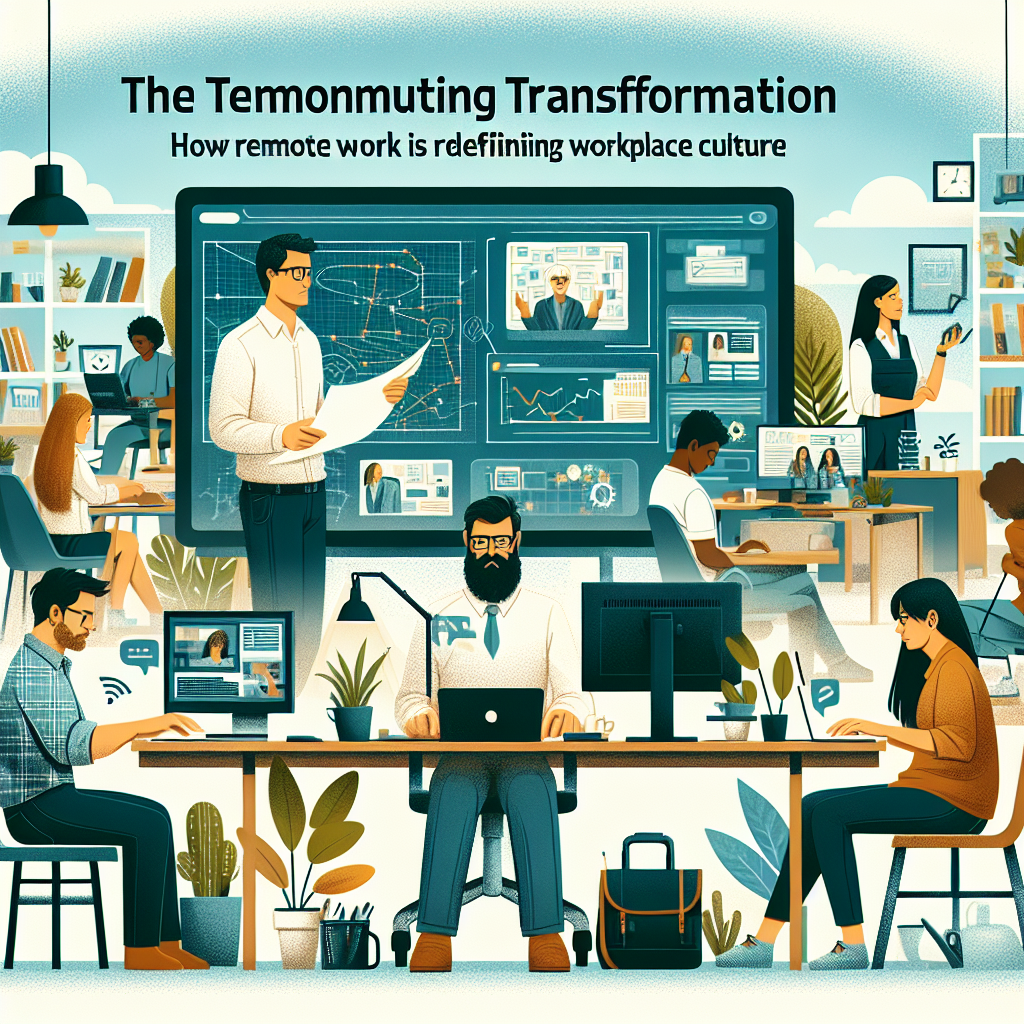In recent years, we have experienced significant changes in our approach to work, driven by technological innovations, shifting employee preferences, and the global pandemic. The emergence of telecommuting, often referred to as the “Remote Revolution,” is profoundly reshaping the work culture. This article delves into the ramifications of this transition for employees, organizations, and society as a whole.
The Emergence of Remote Work
Historical Overview
Telecommuting isn’t a new phenomenon. It has existed since the late 20th century, primarily serving individuals with disabilities or unique commuting issues. However, its popularity surged during the COVID-19 pandemic, prompting many organizations to swiftly adapt to remote work models. A Stanford University survey revealed that at the peak of the pandemic, around 42% of the U.S. workforce was engaged in full-time remote work.
Advantages of Remote Work
-
Flexibility and Work-Life Harmony: One of the most compelling benefits of telecommuting is the flexibility it provides. Employees can tailor their schedules, handle personal obligations, and eliminate commuting time. This flexibility enhances both work-life harmony and overall job satisfaction.
-
Boosted Productivity: Contrary to the traditional view that working from home decreases productivity, research indicates that many remote workers experience higher productivity levels. The absence of office distractions allows employees to concentrate more effectively on their duties.
- Access to a Global Workforce: Organizations are no longer confined to hiring talent within their local area. Remote work enables companies to draw from a diverse, global talent pool, fostering innovation and new perspectives.
Challenges and Considerations
Despite the attractive benefits, remote work also introduces specific challenges:
-
Feelings of Isolation: Employees working from home might encounter feelings of isolation due to the lack of social interactions that typically occur in a traditional office environment. Employers need to find ways to promote social engagement, possibly through virtual team-building activities.
-
Blurred Work-Life Boundaries: The distinction between professional and personal life can become indistinct when working remotely, potentially leading to burnout. Organizations should implement policies that encourage employees to disconnect after work hours.
- Technological Challenges: Not everyone has equal access to the necessary technology for effective telecommuting. Employers must consider fair solutions to ensure that all staff members have the tools they need.
The Organizational Transformation
Cultural Shift
The widespread adoption of remote work has prompted a cultural transformation within organizations. Companies are re-assessing their core values, emphasizing trust, autonomy, and results rather than merely time spent in the office. Employees are increasingly recognized as contributors rather than constant supervisors.
Innovative Management Strategies
To effectively navigate the remote landscape, leaders must embrace innovative management strategies:
-
Results-Oriented Work Environment (ROWE): This approach prioritizes output and performance over hours worked. It encourages employees to take ownership of their responsibilities, fostering accountability and independence.
- Consistent Communication: Managers must maintain open lines of communication, offering support and feedback. Regular one-on-one check-ins through video calls or messaging platforms can help sustain connections and enhance morale.
The Future of Work
Hybrid Work Models
As organizations adjust to the post-pandemic reality, hybrid work models are emerging as a leading choice. This structure combines the advantages of both remote and in-office work. A report by McKinsey indicates that 67% of employees favor a hybrid work arrangement.
Sustainability and Lower Carbon Footprint
The remote work trend also carries significant environmental implications. With fewer individuals commuting and utilizing office resources, remote work has the potential to greatly reduce an organization’s carbon footprint. Companies that embrace this model can position themselves as environmentally responsible, attracting both employees and consumers.
Final Thoughts
The Remote Revolution is not merely a temporary phenomenon; it signifies a fundamental shift in our understanding of work. By leveraging the benefits and addressing the challenges of telecommuting, organizations can foster a culture that prioritizes flexibility, productivity, and employee wellbeing. Looking ahead, the successful integration of remote work may well define the next chapter in the evolution of workplace culture, making it more inclusive, innovative, and adaptable to an ever-evolving world.

